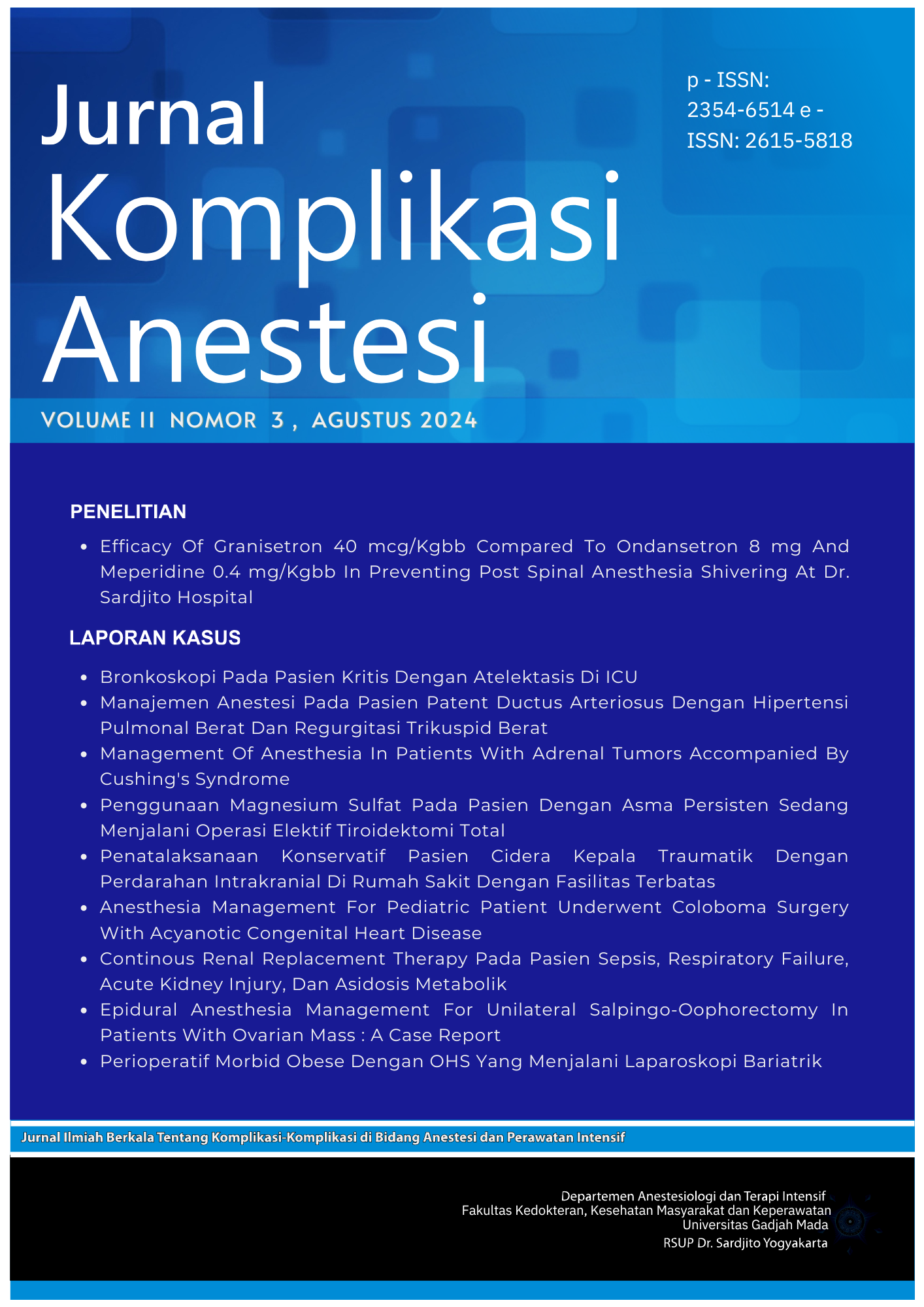Manajemen Anestesi pada Pasien Anak yang Menjalani Operasi Coloboma dengan Penyakit Jantung Bawaan Asianotik
Abstract
Anesthesia for pediatric patients with acyanotic congenital heart disease demands a specialized approach due to complex cardiac anatomy and physiology interactions and the risk of perioperative hemodynamic instability. A two-month-old, five-kilogram child presented with a congenital heart disorder and a left eyelid anomaly since birth. Physical examination revealed superior palpebral coloboma with symblepharon and exposure keratitis. Scheduled for surgical repair, the preoperative assessment included anemia and thrombocytosis. Anesthesia management involved fasting, fluid calculation, and premedication with atropine sulfate 0.1 mg and intravenous analgesic fentanyl 15 mcg (2-3 mcg/kgBW). Intubation proceeded with atracurium, and maintenance included sevoflurane and fentanyl. Monitoring ensured proper EtCO2 and oxygen saturation levels. The one-hour surgery addressed the eyelid issue, followed by post-operative analgesia. The patient was monitored for three days post-op and discharged on the fourth day. Previous studies showed that children with congenital heart disease undergoing noncardiac surgery face increased perioperative risks, influenced by factors such as general condition and disease status, so clinical outcomes during surgery are greatly influenced by anesthesia management that adapts to these factors. Pediatric patients with congenital heart disease can safely undergo general anesthesia for noncardiac surgeries by requiring comprehensive preoperative preparation and careful intraoperative monitoring.
Copyright (c) 2024 I Made Pasek Budiadnyana, Marilaeta Cindryani Ra Ratumasa, Putu Agus Surya Panji, Tjokorda Gde Agung Senapathi

This work is licensed under a Creative Commons Attribution-NonCommercial-ShareAlike 4.0 International License.
The Contributor and the company/institution agree that all copies of the Final Published
Version or any part thereof distributed or posted by them in print or electronic format as permitted herein will include the notice of copyright as stipulated in the Journal and a full citation to the Journal.

















